Topics
Category
Era
Bradstreet, John Scott (1845–1914)
John Scott Bradstreet was a key tastemaker in early twentieth century Minnesota. As a designer of objects and interiors, he shaped the aesthetic tastes and parlors of the Twin Cities. Beyond his retail operations, Bradstreet’s work as an organizer and booster of the fine arts in Minneapolis was central to the development of art exhibitions and societies, and eventually led to the founding of the Minneapolis Institute of Art.
Bradstreet was born on June 23, 1845, in Rowley, Massachusetts. In 1873, he moved to Minneapolis and began working for the furniture firm Barnard, Clark, and Cope. At the time, local decorative tastes tended toward the complicated flourishes of late Victorianism. Within a decade, Bradstreet would strongly influence these tastes and position himself at the center of the art world of Minnesota.
The furniture sold by Barnard, Clark, and Cope was too old-fashioned and too ordinary for Bradstreet’s growing aesthetic vision. Bradstreet opened his own furniture store in 1875, selling furniture and decorations more in line with his interest in the Gothic Revival and English Arts and Crafts styles. After closing his store, he opened another in 1878, with Edmund Phelps, and another with different partners in 1884.
Bradstreet split from his partners in the 1890s and started the solo operation John S. Bradstreet and Company in 1901. By then, Bradstreet’s interests had turned decidedly to the arts of Asia—Japan in particular. In 1903, Bradstreet’s showroom moved to an Italian-inspired residence on South Seventh Street. The building didn’t remain Italian inspired for long.
Japan was the inspiration for the remodeled building, called the Minneapolis Crafthouse. The Crafthouse was Bradstreet’s gallery, sale floor, and museum. Aesthetically-minded Twin Citians crowded the rooms, and soon it became a tourist destination and cultural center for lectures and exhibitions. By the end of the decade, it was a large operation, with about eighty employees handling imports and creating objets de art, furniture, ceramics, and lighting fixtures.
Visitors entered the Japanese-inspired grounds through a Japanese-style gate. The walls of the main hall were covered with Japanese frescoes, draped with imported gold textiles, and hung with paintings, prints, and carvings. The showroom next door was massive (fifty-six feet long) and stuffed with Bradstreet’s own pieces, reproductions of antiques, and imported Moorish, Middle Eastern, European, and Asian antiques.
Of all that was displayed in the Crafthouse, Bradstreet is best known for his favorite and most distinctive product, a line of Japanese-inspired furniture and decorative objects called jin-di-sugi. His jin-di-sugi work was a synthesis of a Japanese carving technique with the American Arts and Crafts style, resulting in a distinctive curvilinear look based in natural forms. Today, many of the objects that once crowded the Crafthouse are recognized as part of American art history.
Bradstreet was also a major player in the development of public art in Minnesota. In 1878, a hotel in Minneapolis hosted the city’s first real art exhibition. Bradstreet, enthusiastic about spreading the gospel of art and able to levy his relationships with the city’s elite, was involved with organizing and putting on the exhibition. His collection even provided an entire room filled with Asian art.
Acting as a promoter, an organizer, a lender, and a donor for art in Minneapolis continued to be central to Bradstreet’s life. He was involved with the founding of the Minneapolis Fine Arts Society in 1883, with the many exhibitions put on by the Society, and, in 1915, with the founding of the Minneapolis Institute of Art.
Bradstreet didn’t live to see the opening of the Institute. He died on August 10, 1914. Five months later, the John Scott Bradstreet Memorial Room opened with the rest of the Institute on January 7, 1915.
Bibliography
Birth record of John Scott Bradstreet. Massachusetts Births, 1841–1915, Film 004150576, page 170.
https://www.familysearch.org/ark:/61903/3:1:S3HT-6R4S-NBX?i=179&cc=1463156
Fannie M. Jacques collection of John S. Bradstreet material
James K. Hosmer Special Collections, Hennepin County Library, Minneapolis
Description: John S. Bradstreet's personal papers include a scrapbook, business correspondence, lecture notes, business advertisements, articles and clippings detailing his career as an interior decorator and furniture designer, and related material. The scrapbook contains letters, photographs, and ephemera from his work and international travels, particularly to Japan. The photographs are mainly interior and exterior shots of his business, the Craftshouse.
https://archives.hclib.org/repositories/2/resources/145
Conforti, Michael, and Jennifer Komar. “Bradstreet’s Crafthouse: Retailing in an Arts and Crafts Style.” In Art and Life on the Upper Mississippi, 1890-1915: Minnesota 1900, edited by Michael Conforti, 63–91. Newark, DE: University of Delaware Press, 1994.
“Fine Collection in Its New Home.” Minneapolis Journal, January 30, 1904.
Gihring, Tim. “His Portrait Has Been Restored. Now to Restore the Memory of John S. Bradstreet: MIA Founder, Craftsman, and the Twin Cities’ Original Tastemaker.” Mia Stories, Minneapolis Institute of Art, June 16, 2014.
http://new.artsmia.org/stories/his-portrait-has-been-restored-now-to-restore-the-memory-of-john-s-bradstreet-mia-founder-craftsman-and-the-twin-cities-original-tastemaker/
Hatler, Carrie. “John Scott Bradstreet: The Apostle of Good Taste.” Forgotten Minnesota, February 25, 2015.
http://forgottenminnesota.com/2015/02/john-s-bradstreet-the-apostle-of-good-taste
Sik, Sarah. “John Scott Bradstreet: The Minneapolis Crafthouse and the Decorative Arts Revival in the American Northwest.” Nineteenth Century Art Worldwide: A Journal of Nineteenth Century Visual Culture, 1, no. 2 (Autumn 2002).
http://www.19thc-artworldwide.org/autumn02/64-spring05/spring05article/301-john-scott-bradstreet-and-the-decorative-arts-revival-in-america
Related Resources
Primary
BP1/B121
Bachelors’ Club records, 1877–1915
Manuscript Collection, Minnesota Historical Society, St. Paul
Description: Constitution, bylaws, minutes of meetings, programs and other papers of this men’s social and study club organized in 1877. John S. Bradstreet was one of its first members.
John S. Bradstreet & Co. Interior Furnishings and Decorations. Minneapolis: The Company, 1905.
Secondary
Millett, Larry. Minnesota’s Own: Preserving Our Grand Homes. St. Paul: Minnesota Historical Society, 2014.
Ramsay, Ronald L. M. “John Scott Bradstreet and the Minneapolis Crafthouse.” Tiller 1, no. 4 (March–April, 1983): 37–48.
Web
Collins, Marsha. “A Pioneer of Decorative Arts: John S. Bradstreet.” Hennepin County Library, 2016.
http://hclib.tumblr.com/post/108473105462/a-pioneer-of-decorative-arts-john-s
Related Images
Cast bronze Amida Buddha figure shows evidence of blackish red paint and gilding [this is a National Bureau of Standards color]. The figure is seated cross-legged on a hexagonal base with the left upturned palm in the lap and the right hand resting on the right knee with fingers touching the ground. The head of the figure has Asian features with elongated ear lobes and topknot typical of Buddha representations. The statue is marked "Bronze/ 19th Century/ John Bradstreet/ Collection". The sculpture was acquired by Samuel A. Trubshaw as a collector for John S. Bradstreet & Co., Minneapolis, Minn.
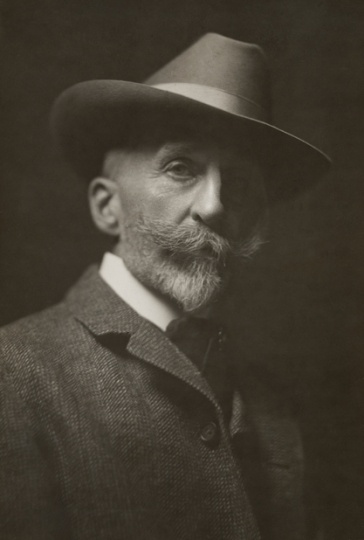
John S. Bradstreet
Public domain
Holding Location
Articles
More Information
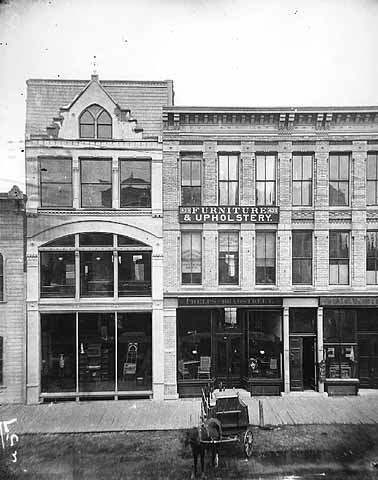
Phelps and Bradstreet
Public domain
Holding Location
Articles
More Information
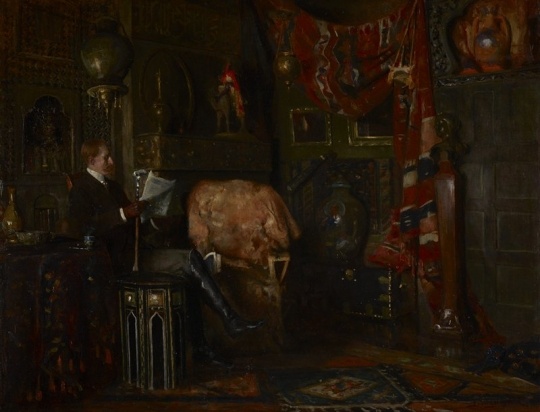
Portrait of John Scott Bradstreet
Douglas Volk. Portrait of John Scott Bradstreet, ca. 1890, oil on canvas, Minneapolis Institute of Art.
Public domain
Holding Location
Articles
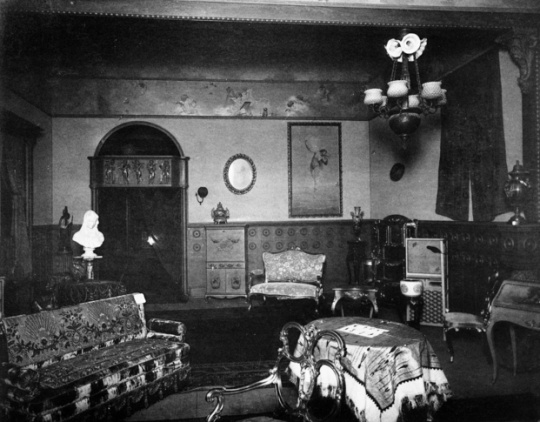
Bradstreet, Thurber & Company showroom
Public domain
Holding Location
Articles
More Information
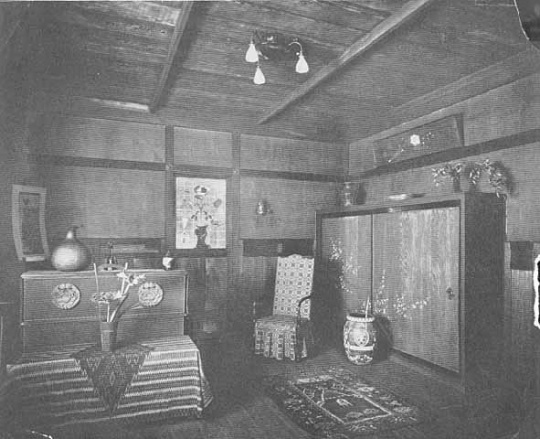
John S. Bradstreet and Company
Public domain
Holding Location
Articles
More Information
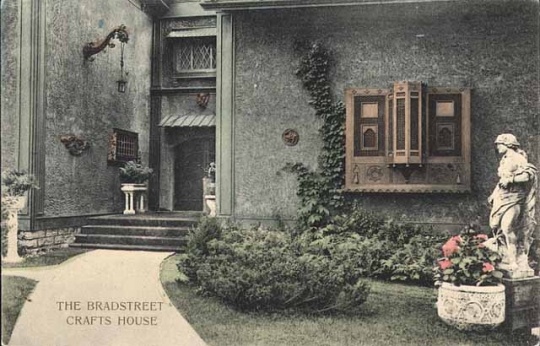
Exterior view of John S. Bradstreet and Company
Public domain
Holding Location
Articles
More Information
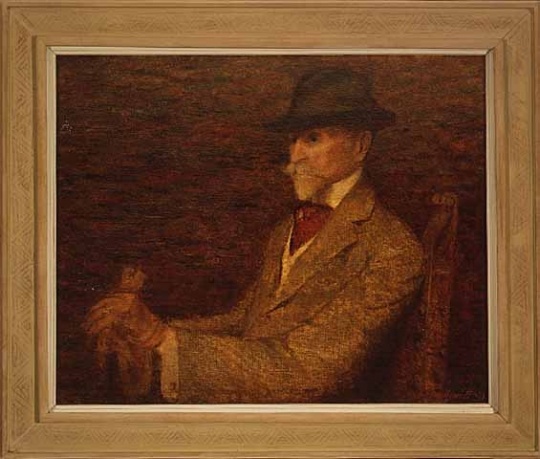
Oil on canvas painting of John S. Bradstreet
Public domain
Holding Location
Articles
More Information
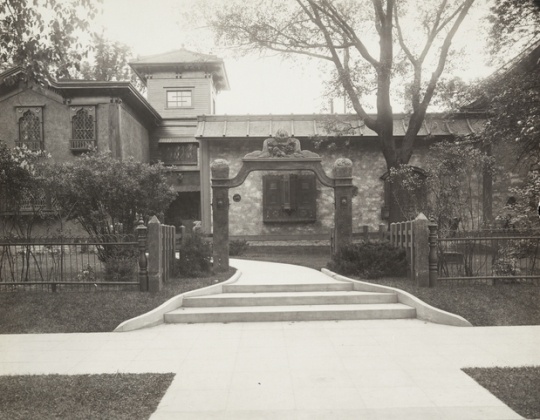
The Bradstreet House
Public domain
Holding Location
Articles
More Information
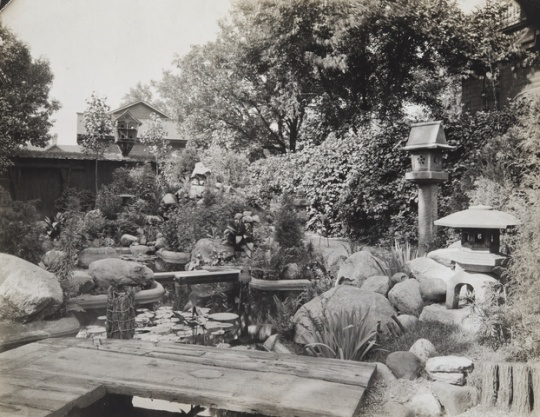
Garden of the Bradstreet House
Public domain
Holding Location
Articles
More Information
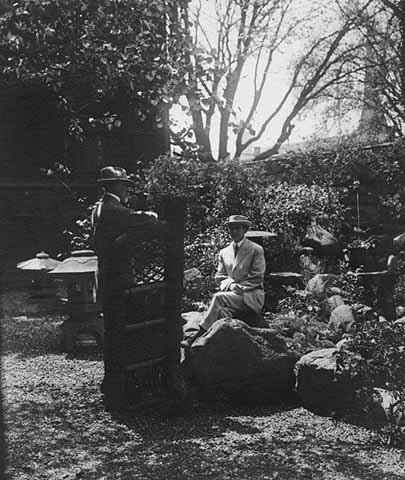
John S. Bradstreet and Sam Trubshaw
Public domain
Holding Location
Articles
More Information
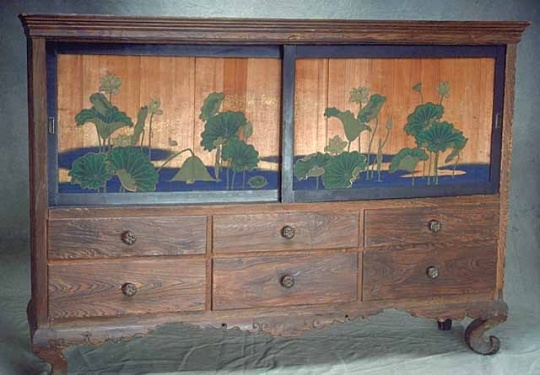
Arts and Crafts cypress cabinet
All rights reserved
Holding Location
Articles
More Information
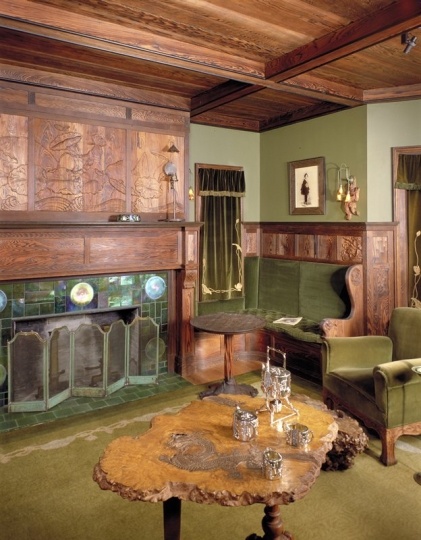
Exhibition room at the Minneapolis Institute of Art
All rights reserved
Holding Location
Articles
More Information
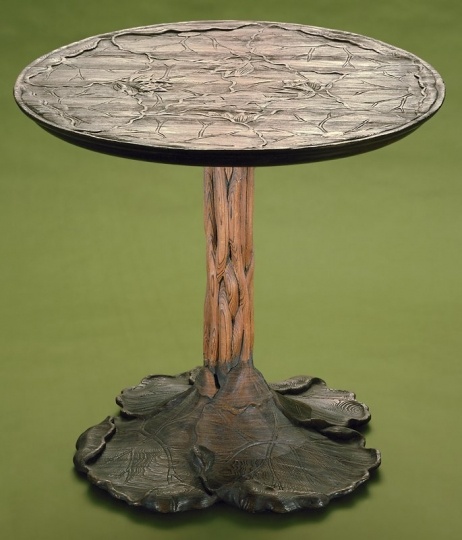
John Scott Bradstreet, Lotus Table
All rights reserved
Holding Location
Articles
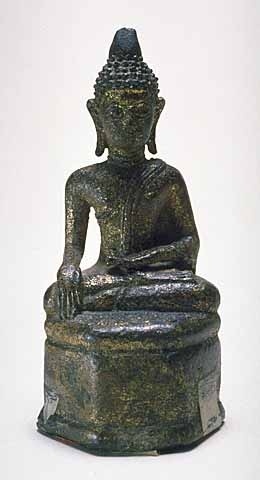
Japanese bronze Amida Buddha
Cast bronze Amida Buddha figure shows evidence of blackish red paint and gilding [this is a National Bureau of Standards color]. The figure is seated cross-legged on a hexagonal base with the left upturned palm in the lap and the right hand resting on the right knee with fingers touching the ground. The head of the figure has Asian features with elongated ear lobes and topknot typical of Buddha representations. The statue is marked "Bronze/ 19th Century/ John Bradstreet/ Collection". The sculpture was acquired by Samuel A. Trubshaw as a collector for John S. Bradstreet & Co., Minneapolis, Minn.
All rights reserved
Holding Location
Articles
More Information
Related Articles
Turning Point
The Minneapolis Crafthouse opens in January of 1904.
Chronology
1845
1873
1875
1878
1883
1884
1893
1901
1904
1914
1915
Bibliography
Birth record of John Scott Bradstreet. Massachusetts Births, 1841–1915, Film 004150576, page 170.
https://www.familysearch.org/ark:/61903/3:1:S3HT-6R4S-NBX?i=179&cc=1463156
Fannie M. Jacques collection of John S. Bradstreet material
James K. Hosmer Special Collections, Hennepin County Library, Minneapolis
Description: John S. Bradstreet's personal papers include a scrapbook, business correspondence, lecture notes, business advertisements, articles and clippings detailing his career as an interior decorator and furniture designer, and related material. The scrapbook contains letters, photographs, and ephemera from his work and international travels, particularly to Japan. The photographs are mainly interior and exterior shots of his business, the Craftshouse.
https://archives.hclib.org/repositories/2/resources/145
Conforti, Michael, and Jennifer Komar. “Bradstreet’s Crafthouse: Retailing in an Arts and Crafts Style.” In Art and Life on the Upper Mississippi, 1890-1915: Minnesota 1900, edited by Michael Conforti, 63–91. Newark, DE: University of Delaware Press, 1994.
“Fine Collection in Its New Home.” Minneapolis Journal, January 30, 1904.
Gihring, Tim. “His Portrait Has Been Restored. Now to Restore the Memory of John S. Bradstreet: MIA Founder, Craftsman, and the Twin Cities’ Original Tastemaker.” Mia Stories, Minneapolis Institute of Art, June 16, 2014.
http://new.artsmia.org/stories/his-portrait-has-been-restored-now-to-restore-the-memory-of-john-s-bradstreet-mia-founder-craftsman-and-the-twin-cities-original-tastemaker/
Hatler, Carrie. “John Scott Bradstreet: The Apostle of Good Taste.” Forgotten Minnesota, February 25, 2015.
http://forgottenminnesota.com/2015/02/john-s-bradstreet-the-apostle-of-good-taste
Sik, Sarah. “John Scott Bradstreet: The Minneapolis Crafthouse and the Decorative Arts Revival in the American Northwest.” Nineteenth Century Art Worldwide: A Journal of Nineteenth Century Visual Culture, 1, no. 2 (Autumn 2002).
http://www.19thc-artworldwide.org/autumn02/64-spring05/spring05article/301-john-scott-bradstreet-and-the-decorative-arts-revival-in-america
Related Resources
Primary
BP1/B121
Bachelors’ Club records, 1877–1915
Manuscript Collection, Minnesota Historical Society, St. Paul
Description: Constitution, bylaws, minutes of meetings, programs and other papers of this men’s social and study club organized in 1877. John S. Bradstreet was one of its first members.
John S. Bradstreet & Co. Interior Furnishings and Decorations. Minneapolis: The Company, 1905.
Secondary
Millett, Larry. Minnesota’s Own: Preserving Our Grand Homes. St. Paul: Minnesota Historical Society, 2014.
Ramsay, Ronald L. M. “John Scott Bradstreet and the Minneapolis Crafthouse.” Tiller 1, no. 4 (March–April, 1983): 37–48.
Web
Collins, Marsha. “A Pioneer of Decorative Arts: John S. Bradstreet.” Hennepin County Library, 2016.
http://hclib.tumblr.com/post/108473105462/a-pioneer-of-decorative-arts-john-s















